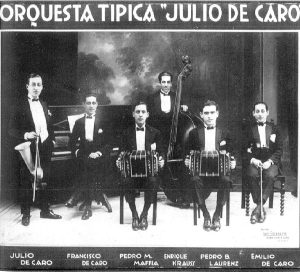The Reminders about Tango
This is a series of topics that cover a wide range of ideas and thoughts on all the things about tango you were afraid to ask but needed to know about. Things that your teacher would have told you about but didn’t have the time for. Below is a sampling of the 150 Tango Reminders in the archive.

Facility
“Facility can be, but is not limited to, Familiarity with Vocabulary, Execution of the Vocabulary, also it’s about Balance, Equilibrium, Kinesthetic Awareness, Kinesthetic Listening, The Neurology of Leading, The Neurology of Following (which is how you respond to something from a follower’s perspective), Proprioception, and last but not least Extending Your Capabilities. We’ll get to that last one in just a bit. Two of the more common aspects of Facility are Execution and Proprioception. So let’s quickly review what Tango Topics means when it refers to these ideas…“

The Non-Gender Cabeceo
What is a ’Non-Gender Cabeceo’ ? A Non-Gender Cabeceo works exactly the same way that a Gendered Cabeceo works. There’s nothing special or different about it. The practice is exactly the same regardless of Gender, or at least it should be. If same sex dancing, or role fluidity, is permitted at Milongas, Marathons, and Encuentros, then the same rules apply in a Gendered Cabeceo.

La Cumparsita
At the end of nearly every Milonga in the world, that you will ever attend, while you will hear more than a few familiar songs, there are a handful that have very specific meanings. One of them is played at the end of the night to signify that the Milonga has come to end, which should be a cue to find your favorite partner and to dance with them. The song ? “La Cumparsita” or as it is translated into English, ‘The Little Carnival’.

The Neurology of Leading – Part 2
A question that comes up for some leads, not all leads, but some Leads (big ‘L’) is why is it important that you spend a lot of time listening to Tango music, and more importantly to mark the music ? Typically you’ll hear this question as “I have a life you know ? I have things to do. I can’t sit around all day long just listening to song after song after song for days, weeks, months, marking up every song in some crazy 8 count beat sort of way, and then try to memorize all that all so….

Getting To Buenos Aires
You’ve been dancing for a while, and you keep seeing these posts about Buenos Aires. Your dream has slowly developed to go to Buenos Aires, to experience for yourself what all the fuss is about. First there’s the dancing, you’ve heard it’s the best. There’s the shoes! OMG the shoes. Then there are friends that have been and rave about teacher X or Milonga Y. You’ve see the videos of performances at Salon Canning (but didn’t know it was Salon Canning), the pictures from Milongas, and thought to yourself that it didn’t look all that challenging than your local milonga there are just more people. You’ve heard that Spanish isn’t necessarily a requirement because there’s a lot of foreigners that speak English, and a good portion of the teachers speak it too. So you if you went, you wouldn’t really need to learn Spanish.

The Tango Haus
What’s below is a small snippet of 13m:06s audio podcast of Today’s Topic on the benefits and detractors of building community using the idea of a Tango House. “What I refer to as the Tango ‘Haus’ idea. In this case this is the German spelling of ‘HAUS’. I just like the way it sounds. But we can use the American spelling of ‘House’. So a few years back and I may be bastardizing some history here. There was a tango house, and I’m not going to name the city, that grew up out of a U.S. based city. This community, at the time had a number of teachers in its area, and they were all using the typical model of how they wanted their students to learn to dance.
